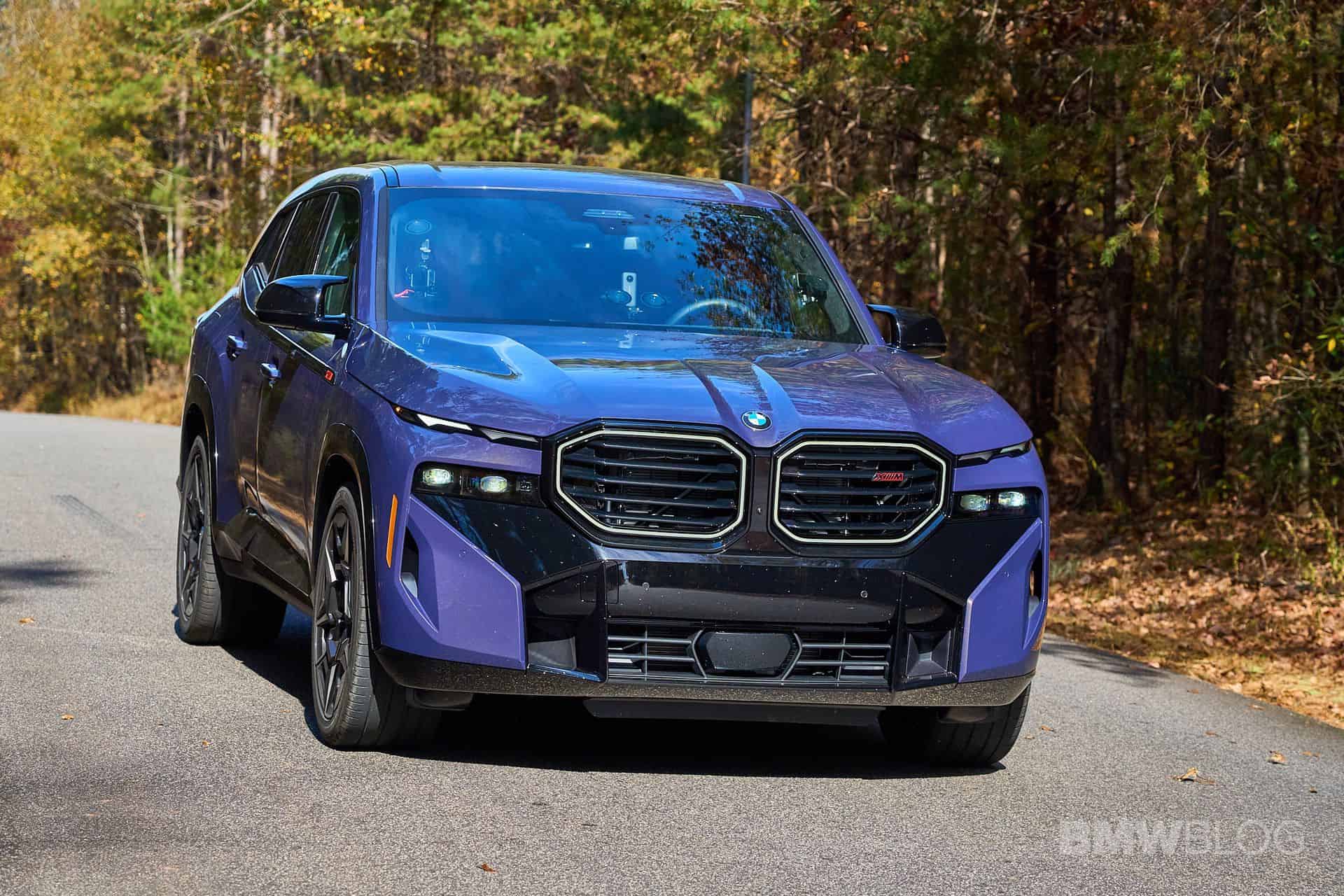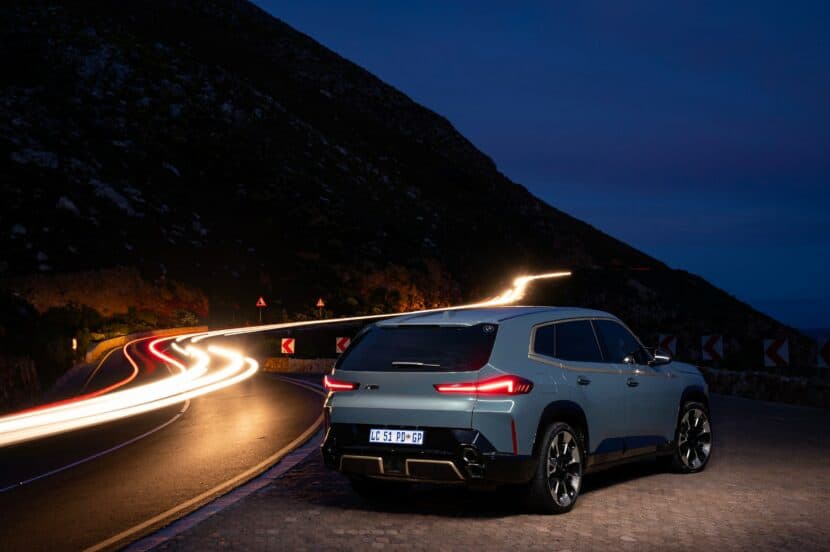The XM is the elephant in the room in more ways than one. BMW wanted the “G09” to serve as a spiritual successor to the M1. Let’s face it; that was never going to happen. One is a humongous plug-in hybrid SUV about as heavy as the moon while the other is a mid-engined, low-slung, lightweight sports car. Marketing hype aside, the harsh reality is the supposedly M flagship isn’t doing all that well.
Numbers don’t lie – the XM is the slowest-selling BMW in the United States so far this year. Ok, you could make the point that it was never going to sell like hotcakes given its exorbitant price tag. However, deliveries through September were down by 14.2% to 1,385 units. Lest we forget the luxobarge wasn’t fully available in the US until later in 2023. That makes 2024 the first full year on sale for the XM, and yet demand is already dropping.
In addition, BMW projected the US would be the XM’s biggest market with 26% of total demand. If it’s not performing here, then where? Not even the Label Red (later rebranded as just the Label) can move the needle, despite being the company’s most powerful production vehicle ever. At the end of 2023, M CEO Frank van Meel told Top Gear that it was a mistake to launch the hotter version so early in the life cycle.
BMW is already looking to simplify the XM’s lineup in the US by dropping the base model. The normal 644-horsepower version is likely to go away next summer, leaving only the Label. There’s also a lesser six-cylinder 50e model but it’s not available in North America. By discontinuing the standard model we get here in the US, the XM will automatically get even more expensive. You can have the 2025 XM for $159,925 whereas the XM Label starts at $185,925.
How is a jump in price of $26,000 going to help with sales? You could argue that with luxury vehicles, it’s not all about how many cars are sold as profit margins are just as important. But to make a profit, you have to sell cars in the first place. BMW only moved 307 XMs in the third quarter of 2024. Surely it’s underperforming, right?
That brings me to the question: What went wrong? The fact it’s so expensive certainly hurts demand. Although I think the XM doesn’t look that bad in the metal provided it’s the right spec, the vehicle’s unusual appearance must’ve deterred some buyers. However, I think there’s more to it than that. The price and design likely had a negative impact, but another “enemy” is within BMW’s lineup.
The X5 M Competition. Not only does it look normal, but it’s also much cheaper. At $125,975, it undercuts the base XM by just under $34,000. Since it eschews the plug-in hybrid setup, it’s also much lighter. By relying solely on a good ol’ V8 engine, performance is more consistent since it doesn’t depend on the available juice in the battery pack. Not that 0-60 mph times matter with these large SUVs, but an X5 M Competition does the job in 3.7 seconds. A regular XM takes 4.1 seconds.
Only the XM Label is quicker, albeit only by a tenth of a second, at 3.6 seconds, but then you’re looking at a nearly $60,000 difference between the two. Fun fact – you could buy an M340i with that money. Alternatively, one could buy a $153,395 ALPINA XB7 and still have about $6,000 to spend on options. So it’s clear that BMW already had a couple of performance SUVs in this echelon. This begs the question – who is the XM for?
If you’re after performance, the X5 M Competition seems like a wiser choice. We could say the same for the XB7, provided you can live with those unusual split headlights. We shouldn’t ignore the X6 M Competition either, which is also far more attainable than the XM. Circling back to my question about the XM’s clientele, the M boss said in October 2022 that it’s for people who’ve had a Lamborghini Urus and/or a Mercedes G-Class and want a similar high-end product from BMW.
As to why the first dedicated M model since the M1 wasn’t another supercar, a BMW official defended the decision back in February 2023. Sarah Lessmann, Product Manager at BMW M GmbH, said customer preferences have shifted toward SUVs since the days of the M1:
“Customers around the world today are looking for SAVs/SUVs that deliver practicality and high performance in one luxurious package. These vehicles have the potential to significantly drive growth for car manufacturers moving forward.”
Assuming that the XM had to exist for whatever reason, what could have BMW done differently? I’m going to go out on a limb and say the model shouldn’t have carried the “world’s most powerful letter.” Instead, it should’ve been badged as an X8. In fact, early rumors had hinted at this moniker before the Concept XM broke cover in November 2021.
By not carrying the M badge, the X8 would’ve been much cheaper. Sure, the profit margins would’ve been lower, but BMW might have sold more. The XM is still relatively new and has several years ahead to redeem itself. Will it? Only time will tell. As we reported in June, a decision regarding a second generation is still pending. However, we won’t be too surprised if there won’t be another one.
The “G09” is believed to remain in production until near the end of 2027. We haven’t heard anything about a Life Cycle Impulse, although we can’t imagine an LCI doing any wonders.
Perhaps we’re being too pessimistic about the XM. Through the first six months of 2024, global sales actually jumped by 53.3%. However, only 3,807 units were sold all over the world. Once again, it’s not a completely fair comparison since the electrified SUV wasn’t fully available during the first months of 2023.
Seeing the glass half full, we can (maybe) appreciate BMW for experimenting. But just like with the 3 Series and 5 Series/6 Series Gran Turismo models, it doesn’t seem to be working out. Ideally, we’re going to get that long-awaited supercar one day instead of the umpteenth SUV.









































































